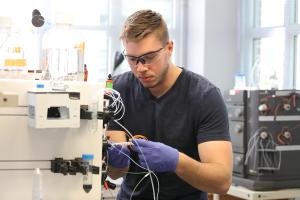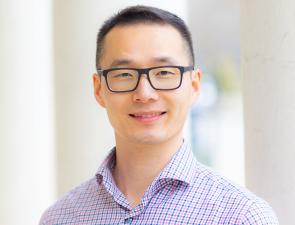Biotechnology & Biomolecular Engineering

Core Faculty

Roseanne M. Ford is a Professor of Chemical Engineering at the University of Virginia. She holds a B.S. degree from the University of Delaware and a Ph.D. from the University of Pennsylvania, both in chemical engineering.

Kyle J. Lampe
Kyle Lampe is an Associate Professor in the Department of Chemical Engineering at the University of Virginia, and by courtesy, Biomedical Engineering and Neuroscience.

Matthew J. Lazzara
Work in the Lazzara Lab employs a combination of experimental and computational methods to study problems in cell signaling, the complex biochemical process cells use to make decisions.

Steven R. Caliari
The Caliari Lab designs, synthesizes, and characterizes new biomaterials to explore the dynamic interplay between cells and their microenvironment, applying these platforms to address fundamental human health challenges in understanding disease and engineering tissues.

The Berger lab uses biotechnology to solve important biomedical, environmental and industrial challenges, and seeks opportunities to translate these technologies to market.

In the Bilodeau group, we explore the intersection between molecular simulations, statistical physics, and artificial intelligence to develop tools to discover and design new molecules, surfaces, and proteins with optimized properties. Our core expertise lies in molecular dynamics simulations of soft matter systems and artificial intelligence for m

Nick Vecchiarello

Rachel A. Letteri
Research Labs
-
Bacterial Dynamics and Engineering in the Ford Group
Neural Tissue Engineering in the Lampe Group
Cell Signaling and Systems Biology Research in the Lazzara Group
Musculoskeletal Tissue Engineering and Mechanobiology Research in the Caliari Group
Molecular biotechnology in the Berger Group
Pharmaceutical Crystallization in the Giri Group

